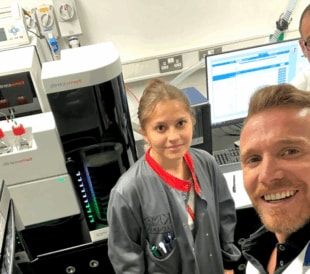The instrumentation comprises the Thermo Scientific™ Dionex Integrion High-Performance Ion Chromatography system coupled with the Thermo Scientific™ TSQ Altis Triple Quadrupole MS. It comes complete with optimized sample preparation, software, necessary consumables, suitability check standard solution and a detailed deployment guide to enable food testing laboratories to overcome the challenge of reliable quantitation and identification of multiple polar anionic pesticides.

Richard mentioned many benefits of using IC/MS for this analysis, and the key takeaways that still apply to this workflow, are the robustness gained by using high capacity and high matrix tolerance anion exchange columns and productivity gains achieved as there is no need to add a derivatization step.
If this solution has caught your attention and you wish to learn more, there is a very detailed and well-written application note titled, “Multi-residue analysis of polar anionic pesticides in food samples using a compact ion chromatography system coupled with tandem mass spectrometry (IC-MS/MS).” There is also a really engaging on-demand webinar, “A New Integrated, Sample-to-Result Analytical Workflow for the Sensitive and Reliable Analysis of Polar Anionic Pesticides and Metabolites” that I recommend that you watch.




